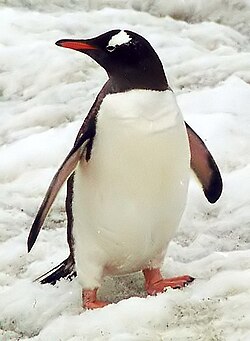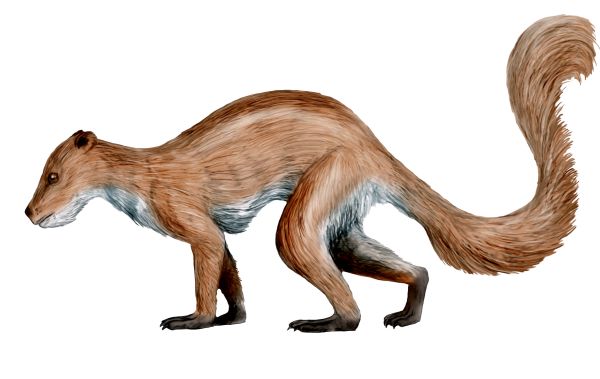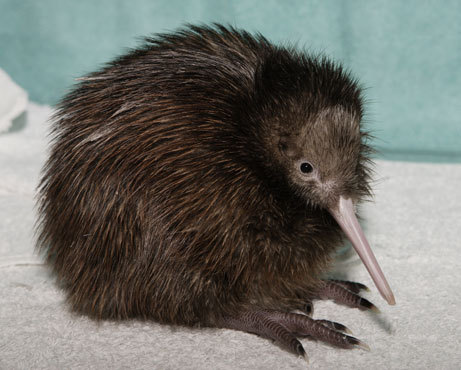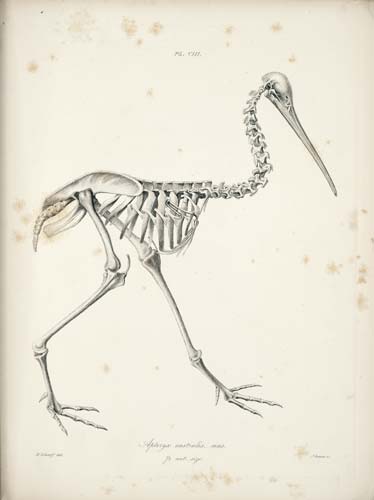Anti-Creationists......time to speak your clout
Options
Comments
-
Yeah ok, especially since you were the first to diverge from what you and I were just discussing toward human vestigiality. Like I said, I'm not going to debate with you as long as you continue to re hash old topics. You brought up vestigiality, a convo you were having with Whar. That has nothing to do with what you and I have been talking about. Anyway, I gotta stop texting and driving. Peace.
-
Actually you brought back up the vestigiality when you claimed that goose bumps were a "relic"....Roots Oceanic wrote: »
We can go ahead and answer the question @waterproof has been pressing, transitioning nicely to the topic of mammals evolving from reptiles..
Most mammals can cause their hair to become ? , thus increasing the air, (i.e., heat) retention. Although humans have lost most of their body hair, goose bumps are the results of our own relic muscles that still exist which used to control these hairs. White-tailed deer grow winter coats four times thicker than summer coats.[/i]
http://www.bobpickett.org/evolution_of_mammals.htm
Which has since been established as nonsense......
HOTEP.....
-
We are mammals. Mammals arose from reptiles.
Within the grouping of Mammals we belong to the Primates. All primates share a common ancestor with the mammals.
Within the grouping of Primates we belongs to the Apes. All apes share a common ancestor with the primates.
Within the grouping of Apes we are the Hominids. We share a common ancestor with all the apes.
None of this should be surprising to you if you had a Biology class. (and paid attention)
So basically you and roots marsh are saying this
that's it i am done with this, this is some of the most outlandish, off the wall ? in the history of man....... and the black man got's to be the one closet to the ape, lol.......
-
Actually you brought back up the vestigiality when you claimed that goose bumps were a "relic"....Roots Oceanic wrote: »
We can go ahead and answer the question @waterproof has been pressing, transitioning nicely to the topic of mammals evolving from reptiles..
Most mammals can cause their hair to become ? , thus increasing the air, (i.e., heat) retention. Although humans have lost most of their body hair, goose bumps are the results of our own relic muscles that still exist which used to control these hairs. White-tailed deer grow winter coats four times thicker than summer coats.[/i]
http://www.bobpickett.org/evolution_of_mammals.htm
Which has since been established as nonsense......
HOTEP.....
I was talking to waterproof, not you. If I need to say something to you, I will either quote or @ you. -
In fact, my post was in response to a question he posed in a different thread. Everything would be beautiful if you would mind your business and let your man speak for himself.
-
Roots Oceanic wrote: »I was talking to waterproof, not you. If I need to say something to you, I will either quote or @ you.
In fact, my post was in response to a question he posed in a different thread. Everything would be beautiful if you would mind your business and let your man speak for himself.
? please this is a public forum......
If you want to carry on a private conversation with @waterproof feel free.....
However, you should be aware that @Bambu is gonna pull your card every time you try to promote that ? on these boards.....
Everything would be great for you and your humdrum crew if I was not around to illuminate the flaws in your theory......
But, you know the routine out here lil' ? .....
Only the strong survive..... http://youtu.be/7Qz0PgqrXd0
http://youtu.be/7Qz0PgqrXd0
-
Dry your tears.
-
LOL.......
Clean up your argument and come back when you can come better than platypodes and vestigiality.....
HOTEP......
-
Peace
-
"Goose bumps in humans may, however, have taken on a minor new role. Like flushing, another thermoregulatory mechanism, they have become linked with emotional responses - notably fear, rage or the pleasure, say, of listening to beautiful music. This could serve as a signal to others. It may also heighten emotional reactions: there is some evidence, for instance, that a music-induced frisson causes changes of activity in the brain that are associated with pleasure." - New Scientist
Please note the language here. It is far from absolute. And it does nothing to change the fact that goose bumps are vestigial. Even if a function for a vestigial ? or feature remains if the original function has been lost the item is vestigial. That is the definition. Regulating internal temperature was the original purpose and goose bumps no longer do that in humans.
Whales still have leg bones.
Horse still have finger bones.
Human have a tail bone.
Humans have an appendix.
Apes have tail bones.
Blind mole rats have eyes.
These types of structures are expected in an evolutionary process. If they did not exist it would stand as strong evidence that our theories on evolution are all wrong. -
Please note the language here. It is far from absolute. And it does nothing to change the fact that goose bumps are vestigial. Even if a function for a vestigial ? or feature remains if the original function has been lost the item is vestigial. That is the definition. Regulating internal temperature was the original purpose and goose bumps no longer do that in humans.
But then you say absolutely that.....in humans they serve no purpose since they no longer are tied to standing hair on its end to increase size.
But now you say....Even if a function for a vestigial ? or feature remains if the original function has been lost the item is vestigial.
However....
The whole assumption is quite unscientific, and is based entirely on insufficient knowledge. These "non-functional organs" were in fact organs whose "functions had not yet been discovered."
The appendix (above), which evolutionists thought to be a vestigial ? , has now been understood to play an important part in the body's immune system. The coccyx at the lower end of the vertebral column is also not a vestigial ? but provides an attachment for our pelvic organs so that they will not collapse.

-
@bambu, @whar; hope you don't mind. I'm bored @ work and I'm going to jump in, having read what was being discussed between the two of you.However....
The whole assumption is quite unscientific, and is based entirely on insufficient knowledge. These "non-functional organs" were in fact organs whose "functions had not yet been discovered."
The appendix (above), which evolutionists thought to be a vestigial ? , has now been understood to play an important part in the body's immune system. The coccyx at the lower end of the vertebral column is also not a vestigial ? but provides an attachment for our pelvic organs so that they will not collapse.
^^ From: http://www.darwinismrefuted.com/embryology_02.html
@bambu, cite your sources.
-
@bambu
Vestigiality does not necessarily imply that the structure, or ? , is completely useless. The point of vestigiality is that the structure, or ? , has lost a purpose. What is the reason for this loss? Evolution, of course.
Opponents of evolution always raise the same argument when vestigial traits are cited as evidence for evolution. "The features are not useless," they say. "They are either useful for something, or we haven't yet discovered what they're for." They claim, in other words, that a trait can't be vestigial if it still has a function, or a function yet to be found.
But this rejoinder misses the point. Evolutionary theory doesn't say that vestigial characters have no function.
http://jerrycoyne.uchicago.edu/excerpt.html
Darwin saysAn ? , serving for two purposes, may become rudimentary or utterly aborted for one, even the more important purpose, and remain perfectly efficient for the other.An ? rendered, during changed habits of life, useless or injurious for one purpose, might easily be modified and used for another purpose.
http://www.talkorigins.org/faqs/comdesc/section2.html#vestiges_functionalAgain, an ? may become rudimentary for its proper purpose, and be used for a distinct object: in certain fish the swim-bladder seems to be rudimentary for its proper function of giving buoyancy, but has become converted into a nascent breathing ? or lung.
Vestigiality does not state that a structure has to be completely functionless.
vestigial. a. Of, pertaining to, or of the nature of a vestige; like a mere trace of what has been; also, rudimentary. In biology vestigial has a specific application to those organs or structures which are commonly called rudimentary, and are rudimentary in fact, but which are properly regarded, not as beginnings or incipient states, but as remains of parts or structures which have been better developed in an earlier stage of existence of the same organismm, or in lower preceding organisms, and have aborted or atrophied, or become otherwise reduced or rudimental in the evolution of the individual or of the species.
(The Century Dictionary: An Encyclopedic Lexicon of the English Language 1911)
it is incorrect to state that to be vestigial an ? must be non-function
http://rac.myweb.uga.edu/papers/Naylor1982.pdf
Ostrich and penguin wings, for example, have new uses but the original purpose for flight was lost.
All flightless birds have wings. In some, like the kiwi, the wings are so small—only a few inches long and buried beneath their feathers— that they don't seem to have any function. They're just remnants. In others, as we saw with the ostrich, the wings have new uses. In penguins, the ancestral wings have evolved into flippers, allowing the bird to swim underwater with amazing speed. Yet they all have exactly the same bones that we see in the wings of species that can fly. That's because the wings of flightless birds weren't the product of deliberate design (why would a creator use exactly the same bones in flying and flightless wings, including the wings of swimming penguins?), but of evolution from flying ancestors.
A trait can be vestigial and functional at the same time. It is vestigial not because it's functionless, but because it no longer performs the function for which it evolved. The wings of an ostrich are useful, but that doesn't mean that they tell us nothing about evolution.
http://jerrycoyne.uchicago.edu/excerpt.html
@bambu
The wing of the ostrich resembles those of the gyrfalcon and the hawk. Who does not know how the speed of the gyrfalcon and hawk in flight exceeds that of other birds? The ostrich certainly has wings like theirs but not their speed of flight. Truly, it has not the capacity to be lifted from the ground and gives only the impression of spreading its wings as if to fly; however, it never supports itself above the earth in flight.
It is exactly the same with all those hypocrites who pretend to live a life of piety, giving the impression of holiness without the reality of holy behaviour. They certainly have wings, as far as appearance goes, but in terms of action, they creep along the ground, because they spread their wings only to give an illusion of holiness, but they cannot possibly raise themselves from earth, weighed down as they are by the weight of worldly preoccupations.
http://www.abdn.ac.uk/bestiary/translat/41v.hti -
Did early matings with Neanderthals increase our ability to fight disease?
"Our ancestors’ liaisons with Neanderthals and Denisovans may have made them less susceptible to local infections, proposes Stanford immunologist Laurent Abi-Rached, giving them a survival advantage as they migrated out of Africa to Europe and Asia. “Breeding with our evolutionary cousins may have facilitated the spread of modern humans by preventing them from getting sick.”"
Because diseases can be endemic to specific regions of the world, these genes exist in thousands of versions, known as alleles.
http://discovermagazine.com/2012/jan-feb/80#.UMuc3IaQ8sc
DNA studies do not indicate that separate classifiable subspecies (races) exist within modern humans. While different genes for physical traits such as skin and hair color can be identified between individuals, no consistent patterns of genes across the human genome exist to distinguish one race from another. There also is no genetic basis for divisions of human ethnicity. People who have lived in the same geographic region for many generations may have some alleles in common, but no allele will be found in all members of one population and in no members of any other.
http://amjca.blogspot.com/2009/04/human-genome-project-confirms-that-race.html
-
waterproof wrote: »WTF now we came from reptiles that what you trying to say.............? they got your mind, lol......... i heard it all now, not only you believe that you came from apes or ape like creatures but the ape like creatures ancestors are reptiles....WOW
@waterproof
Restoration of Procynosuchus, a member of the cynodont group, which includes the ancestors of mammals
http://en.wikipedia.org/wiki/Evolution_of_mammals
Plesiadapis is one of the oldest known primate-like mammal species which existed about 58-55 million years ago
http://en.wikipedia.org/wiki/Plesiadapis
Fully rendered timeline of evolution here:
http://en.wikipedia.org/wiki/Timeline_of_human_evolution#Timeline -
-
The simple fact that you can cut out the appendix and a person lives a long and healthy life shows that it is not important to the person's health.
The fact the the coccyx anchors muscle does not change its vestigial status. Its function is to provide the bones to a tail. It lost that function but still remains.
-
waterproof wrote: »that's it i am done with this, this is some of the most outlandish, off the wall ? in the history of man....... and the black man got's to be the one closet to the ape, lol.......
All people (as a population) have evolved. Black people are not the closet to the apes. For all we know if we did an experiment where we compare our two DNA sequences to some random chimp I would show more similar to the chimp than you.
-
@bambu
Vestigiality does not necessarily imply that the structure, or ? , is completely useless. The point of vestigiality is that the structure, or ? , has lost a purpose. What is the reason for this loss? Evolution, of course.
Darwin saysAn ? , serving for two purposes, may become rudimentary or utterly aborted for one, even the more important purpose, and remain perfectly efficient for the other.An ? rendered, during changed habits of life, useless or injurious for one purpose, might easily be modified and used for another purpose.Again, an ? may become rudimentary for its proper purpose, and be used for a distinct object: in certain fish the swim-bladder seems to be rudimentary for its proper function of giving buoyancy, but has become converted into a nascent breathing ? or lung.
However.....
Your hero also says...There remains, however, this difficulty. After an ? has ceased being used, and has become in consequence much reduced, how can it be still further reduced in size until the merest vestige is left; and how can it be finally quite obliterated? It is scarcely possible that disuse can go on producing any further effect after the ? has once been rendered functionless. Some additional explanation is here requisite which I cannot give.
There is no need to cite common knowledge......
For example....
Apes possess an appendix, whereas their less immediate relatives, the lower apes, do not; but it appears again among the still lower mammals such as the opossum.....
-
Your hero also says...There remains, however, this difficulty. After an ? has ceased being used, and has become in consequence much reduced, how can it be still further reduced in size until the merest vestige is left; and how can it be finally quite obliterated? It is scarcely possible that disuse can go on producing any further effect after the ? has once been rendered functionless. Some additional explanation is here requisite which I cannot give.
This does not contradict what was quoted earlier from the same man.
For example, disuse of the kiwi's wings has not produced much further effect after they have been rendered functionless for flight. As a consequence, the wings have been reduced in size because they do not serve much of any other purpose, if any.
Again, vestigiality does not necessarily state that the structure is completely useless.
But if the structure is rendered completely functionless, the structure will reduce until not much of anything, if anything at all, is left.
You've got to learn how to comprehend what you're reading. -
Apes possess an appendix, whereas their less immediate relatives, the lower apes, do not; but it appears again among the still lower mammals such as the opossum.....
Incorrect information.
Lemurs, for example, are part of the lower primate family and
several living species, including certain lemurs, still have an appendix attached to a large cecum which is used in digestion.
In addition,
[Scientists have] even looked in animals that don't have an appendix at all, and there's a part of the gut in those animals called a cecum. It serves as a digestive ? , but if you look at how the biofilms are laid out in those animals, as you get further and further into the back end of the gut, you find a lot more biofilms. [Scientists have] looked at mice, rats, humans, and done a little bit of work in nonhuman primates. It looks like, across the board [in mammals], there's something there, probably not as effective as the appendix, that maintains and harbors those beneficial bacteria. -
And how exactly was the kiwi "wing" supposed to function????
 the Encyclopedia of New Zealand wrote: »Most birds have a raised central keel on their breastbone, to which feathers are attached. But ratites have a flat breastbone. This etching, which appeared in Richard Owen’s Memoirs on the extinct wingless birds of New Zealand in 1879, illustrates the absence of a keel in kiwi."
the Encyclopedia of New Zealand wrote: »Most birds have a raised central keel on their breastbone, to which feathers are attached. But ratites have a flat breastbone. This etching, which appeared in Richard Owen’s Memoirs on the extinct wingless birds of New Zealand in 1879, illustrates the absence of a keel in kiwi."
Again...
Apes possess an appendix, whereas their less immediate relatives, the lower apes, do not; but it appears again among the still lower mammals such as the opossum.....
-
Again...
Apes possess an appendix, whereas their less immediate relatives, the lower apes, do not; but it appears again among the still lower mammals such as the opossum.....
Again...Incorrect information.
Lemurs, for example, are part of the lower primate family and
several living species, including certain lemurs, still have an appendix attached to a large cecum which is used in digestion.
In addition,
[Scientists have] even looked in animals that don't have an appendix at all, and there's a part of the gut in those animals called a cecum. It serves as a digestive ? , but if you look at how the biofilms are laid out in those animals, as you get further and further into the back end of the gut, you find a lot more biofilms. [Scientists have] looked at mice, rats, humans, and done a little bit of work in nonhuman primates. It looks like, across the board [in mammals], there's something there, probably not as effective as the appendix, that maintains and harbors those beneficial bacteria.
-
And how exactly was the kiwi "wing" supposed to function????
No ratite posesses a keel, including the ostrich. This is a result of their adaptation to a terrestrial life. This is why we call them "flightless" birds. They can't fly.
Like your friend says,After an ? has ceased being used, and has become in consequence much reduced.. ..[it will be] further reduced in size until the merest vestige is left.. ..[until it is] finally.. ..obliterated
This discussion has been closed.



